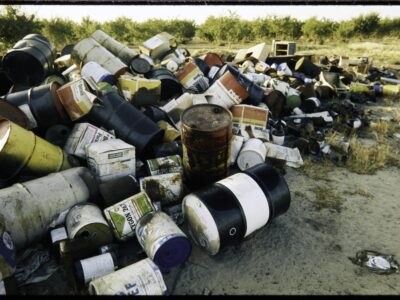Rebuilding: Lessons from Katrina and Sandy
Recent experience shows that rebuilding is a slow, frustrating process.
We’ve had experience with the rebuilding process twice in the past dozen years, after Hurricanes Katrina and Sandy. The storm destruction takes place in a matter of days, but rebuilding takes years — just like the difference between the instant it takes to break a leg and the subsequent weeks of wearing a cast.
Houston is going to face a huge task in rebuilding after Hurricane Harvey. So are many parts of Florida after Irma. These situations are roughly comparable to Hurricane Sandy’s impact in the Northeast. The situation in Puerto Rico after Maria is more dire — perhaps the most comparable to what happened to New Orleans in 2005.
Katrina hit New Orleans with catastrophic effect, measured in terms of loss of life and massive destruction of buildings and infrastructure. The levee failure in New Orleans was sudden and unexpected, and the flooding was more prolonged because there was nowhere for the water to go. It was a long time before many people could return to the city. Disaster response was slow, with temporary housing slow to arrive and often defective. In terms of rebuilding, recovery money was impeded by documentation requirements, many of which have since been eased. After the disaster, there were big plans to use it as the occasion for a dramatic redesign of the city to make it more resilient and sustainable. There was incremental progress in that direction, but the city mostly rebuilt along pre-Katrina lines. At its low point, the city’s population was down by 50%, but it is now back to 80% of pre-Katrina levels. Blacks and the poor were less likely to return to the city after they were displaced, and some parts of the city like the Ninth Ward remain half-empty. Other parts of the city were gentrified. The school system has fragmented with a multitude of charter schools, and there were over a dozen different starting days for school this year. New Orleans may someday be a better city than it was before the hurricane hit, but for better or worse, it will never be the same city.
Rebuilding Puerto Rico poses even greater challenges than New Orleans did, if only because of geography. It’s hard to forecast what Puerto Rico will be like in ten years even with a relatively successful rebuilding process, but it’s safe to say that it too will never be the same place as it was before a mega-disaster hit. It seems likely that it will lose some population, just as New Orleans did. Both areas are also alike in that they were economically troubled to begin with, providing less reason for people to hang around waiting for a recovery. There has already been speculation that a sure of Puerto Rican migration to places like Orlando could have major political implications nationally.
Hurricane Sandy was less devastating than Katrina, but still a massive disaster: 159 killed and around $65 billion in property damage. In light of the lessons learned from Katrina, Congress amended the federal disaster relief law, the Stafford Act, to make disaster relief more efficient. Again, the process was slow. Two years after Sandy, the Congressional Research Service reported favorably on the planning process, but also said the rebuilding process was slower: “The allocation and obligation of federal assistance dollars are gradually increasing, but the expenditure of these dollars for actual construction of new infrastructure projects, and for the repair and replacement of existing infrastructure, is, as expected, a multi-year, potentially even decade-long, process.” After almost three years, a House staff report assessed the progress again, reporting on the slow pace of outlays for infrastructure, estimating that about a quarter of the post-Sandy funding would not actually be spent until five years after the event. It will probably take a similar amount of time for recovery in Houston and parts of Florida. A key question is going to be whether these places will learn from these lessons and get more serious about flood risks, or whether they will follow the familiar path of rebuilding the same vulnerabilities.
It’s tempting to rail against bureaucracy and red tape and complain about the slowness of the rebuilding process. Yet it takes time to figure out how best to spend funds, to plan projects, and to actually execute major construction projects — particularly given the needs for public input, coordination between different levels of government, and the need for financial controls to prevent waste and corruption. FEMA has slowly become more open to encouraging resilient rebuilding alternatives. But there is a lot more that could be done, as a recent report from the Center for American Progress describes..
Given the difficulty of rebuilding after a major disasters like Katrina, Sandy, or this year’s trio of storms, it’s best to take action beforehand to minimize the damage. Risk mitigation may well be cheaper than disaster recovery, not to mention saving lives. But that’s a topic for a different day.







Reader Comments